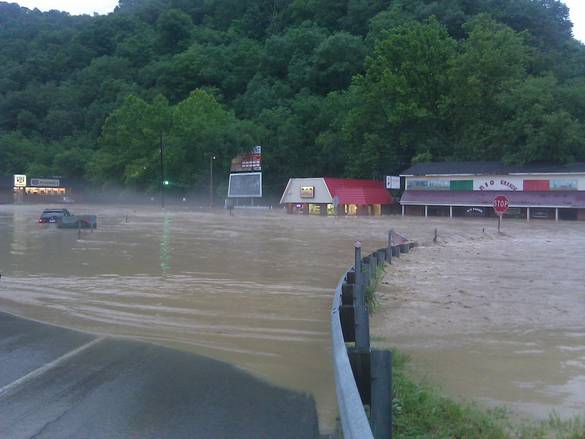
The Flood Victim’s Guide to Dealing with Insurance Claims
In June last year, Camden south-west of Sydney was inundated by flood water. While businesses struggled to clean up and get going again, insurers argued over the difference between stormwater or creek flooding. Insurance Australia Group (IAG) determined it would cover businesses for only centimetres of the loss. 
One affected business owner, Ted Rixon of Alted Printing said at the time “I’ve been in business for 30 years, I have been paying my premiums all this time and then you put in a claim and they don’t want to pay. They are quite willing to take money off you, but the minute they’ve got to pay out they come up with all these little loopholes”.
It’s an experience many Queenslanders will know all too well.
Fast forward to 2017 and this week, NSW Premier Gladys Berejiklian warned insurers not to delay making payments to flood-hit residents in the state's north as the damage bill from last week's deluge continues to rise.
Touring flood-hit towns on Monday, Ms Berejiklian said insurers were "on notice" to treat people fairly and act promptly.
It remains to be seen how the big insurers will respond to the flood crisis in Queensland and NSW in the coming weeks but one thing we’re certain of. Whether you live in the flood zone or not, you will be affected by it financially. Payouts to flood victims will eventually lead to higher premiums for us all.
Listen to the Salvos on how to donate
Listen to Tristan Harris on what it means for fruit & veg prices
The Queensland floods of 2011 prompted reforms, when many homeowners found out the hard way that it was the source of the water, and the small print in their insurance policy, that made the difference when it came to making a claim.
Andrew Kollmorgan from Choice says in line with changes brought about by the National Disaster Insurance Review, insurers have had to define flood from July 2014 as "the covering of normally dry land by water that has escaped or been released from the normal confines of any lake, river, creek or other natural watercourse, whether or not altered or modified, or any reservoir, canal, or dam".
Nearly all home and contents policies automatically cover storm run-off, whereas you may have to opt in to flood cover (and pay extra). In recent years, however, many insurers have added flood cover as a mandatory component of their polices, though in some cases it's still offered as an option or not offered at all.
If you've taken out flood cover recently, check your PDS for any embargo period - the stipulated time between taking out a policy and being able to make a claim.
It's important to know that the Financial Ombudsman Service (FOS) has ruled in favour of the consumer on a number of rejected claims, where the homeowner had been affected by both storm run-off and flood. Insurers had rejected the claims because the homeowner didn't have flood cover, however the FOS determined that the storm run-off occurred before riverine flooding.
Actions of the sea such as king tides are rarely if ever covered by home insurance. There is, however, an important distinction between actions of the sea and storm surge involving the sea, which you may be covered for.
If you make a claim and there's a dispute about whether an action of the sea or a storm surge caused the damage, your insurer is required under the industry's code of practice to share the findings of any expert hydrology reports with you.
The FOS has also held insurers accountable for disputed claims if the salesperson gave consumers the impression that flood cover was included in their policy, regardless of what the small print actually said.
The Queensland floods in 2011 also brought about changes in the General Insurance Code of Practice that are currently in effect:
- A four-month deadline for accepting or rejecting a claim unless there are extenuating circumstances, including "extraordinary catastrophe or disaster as declared by the Insurance Council Board".
- A 12-week deadline for reports by external experts, such as hydrology reports; the sharing of these reports with policyholders; and an explanation of how they affect claims decisions, if requested.
- Enhanced employee training so that company staff can "carry out their claims-handling tasks and functions competently, and deal with customers professionally", with a focus on understanding a policyholder's particular circumstances.
- A new "right to claim", says insurers, "will not discourage you from lodging a claim, even if we are of the view that it is unlikely to be accepted".
In addition, the industry has promised to release future Code Compliance Committee reports that detail significant breaches of the code by insurers.
http://www.abc.net.au/news/2016-06-23/picton-storm-insurance-frustration/7536440


